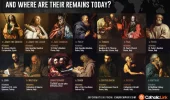Antomuchacho
Active Member
- Time of past OR future Camino
- Planning on startting first time at e d of april start of may
As someone who done the camino frances too see new places and enjoy the experience of people just walking travelling together as one etc i am aware of course of the religious importance of the pilgramage and st james remains!!
Strictly speaking , you can then start youre journey from wherever you want in mainland europe??
Are there alberques in holland, germany italy etc?
And are most people doing the camino because of st james remains and reverance within christianity?
Why did other saints not have the same pilgrimage legacy befall upon them?
A lot of questions but just wondering!!
Strictly speaking , you can then start youre journey from wherever you want in mainland europe??
Are there alberques in holland, germany italy etc?
And are most people doing the camino because of st james remains and reverance within christianity?
Why did other saints not have the same pilgrimage legacy befall upon them?
A lot of questions but just wondering!!



























